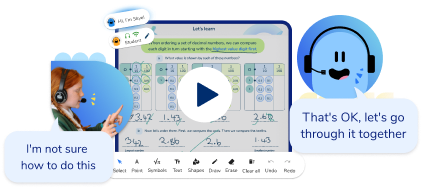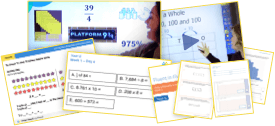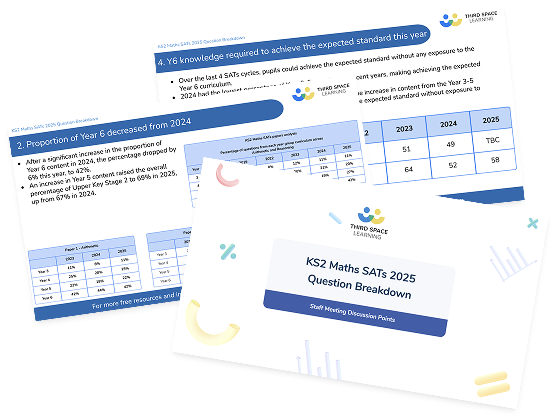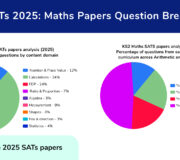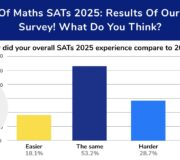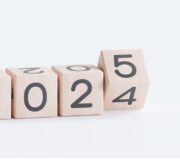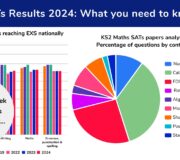SATs Results 2025: Headlines & Next Steps For Senior Leaders
Finally, the Key Stage 2 SATs results 2025 are in, and there’s plenty to take in. Whether you’re a school leader, class teacher or just trying to make sense of the numbers, these results offer useful insights into how your pupils have done, what comes next and what practical steps to take to prepare for next year.
This review of the 2025 Key Stage 2 standard assessment tests examines how pupils performed nationally and compares this year’s results to those of 2024. As a maths tutoring provider, we’ll focus primarily on the maths papers, exploring raw and scaled scores, how marks relate to content domains, and what this tells us about curriculum coverage.
We break down what the outcomes mean for your school and how to discuss them with staff, parents and children. As maths tutoring specialists, the main focus will be on the maths SATs scores, difficulty and nuance of the maths tests.
SATS 2025: STAY UP TO DATE
Join our email list to stay up to date with the latest news and free resources for SATs 2025. As usual our expert teachers will be on hand to provide one to one tuition support, revision resources, expert analysis on papers, 2025 SATs teacher survey results and the 2025 SATs results.
2025 KS2 SATs results headlines
If you don’t have time to read the full report, here are the key stats for 2025:
- 73% of pupils reached the expected standard in English grammar, punctuation and spelling, up 1% from 72% in 2024 papers
- 62% of pupils reached the expected standard in all of reading, writing and maths, up 1% from 61% in 2024
- 75% of pupils reached the expected standard in reading, up 1% from 74% in 2024
- 74% of pupils reached the expected standard in maths, up 1% from 73% in 2024
- 72% of pupils reached the expected standard in writing up 0.5% from 72% (rounded) in 2024
Maths SATs 2025 Question Breakdown: Staff Discussion Points
Download this presentation to take you through the key points from our question-level analysis of the 2025 KS2 SATs maths papers, includes example questions from the 2025 maths SATs papers. Can be used in staff meetings.
Download Free Now!Understanding SATs Scores
SATs results for English reading, English grammar, punctuation and spelling, and maths are reported using scaled scores, ranging from 80 to 120.
Scaled scores for Key Stage 2 SATs
| Scaled score | What it means |
| 120 | The highest scaled score a pupil can achieve in the KS2 SATS. |
| 101-119 | Any score over 100 means that a child has exceeded the expected standard in the test papers. |
| 100 | The expected standard indicates children are working at age-related expectations. |
| 80-99 | Children with a scaled score of 80-99 are working towards the expected standard. |
| <80 | Pupils who do not achieve the lowest scaled score have not demonstrated sufficient understanding of the KS2 SATs and are expected standard ns (not achieved). |
Writing is assessed separately, using teacher assessment. Judgements here are reported as:
- working towards
- expected
- greater depth
Although the concept of ‘greater depth’ isn’t officially used in reading, grammar, punctuation and spelling, and maths SATs results, schools generally consider a score of 110+ as greater depth.
Raw vs scaled score conversion
A raw score, the child’s total marks for the papers, doesn’t provide the full story. It tells you how many questions a pupil has answered correctly, but tests vary in difficulty each year. Therefore, raw scores are converted to scaled scores to ensure results are fair and can be compared across years.
To do this, schools must use the scaled score conversion tables provided by the Standards and Testing Agency (STA).
Raw and scaled scores for SATS 2025

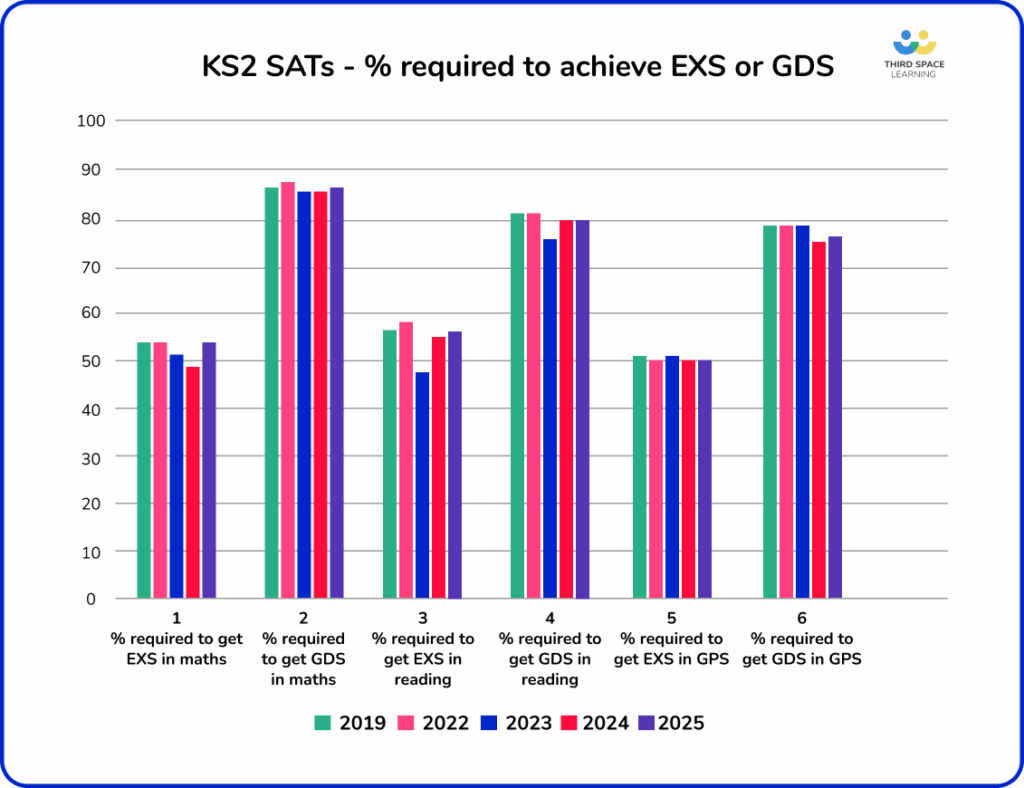
An increase in raw score to achieve the expected level in maths
A lower raw to scaled scores conversion in 2024 corresponded with an increase in Year 6 maths content. Pupils needed 54 marks, or 49%. This was the first time the required percentage fell below 50%.
Unsurprisingly, with less Year 6 content in the 2025 papers, the required total marks to meet the golden 100 scaled score rose to 58 marks, or 53%. This shift was anticipated, as a lower proportion of Year 6 content typically leads to a higher threshold for meeting the end of KS2 standard.
National Key Stage SATs results 2025
Here’s how things look nationally for the 2025 SATs.
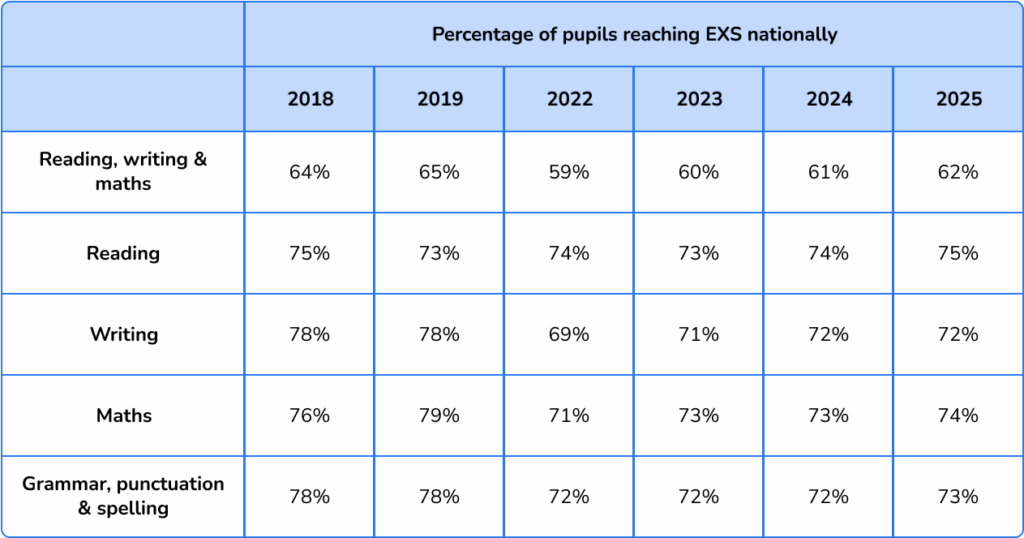
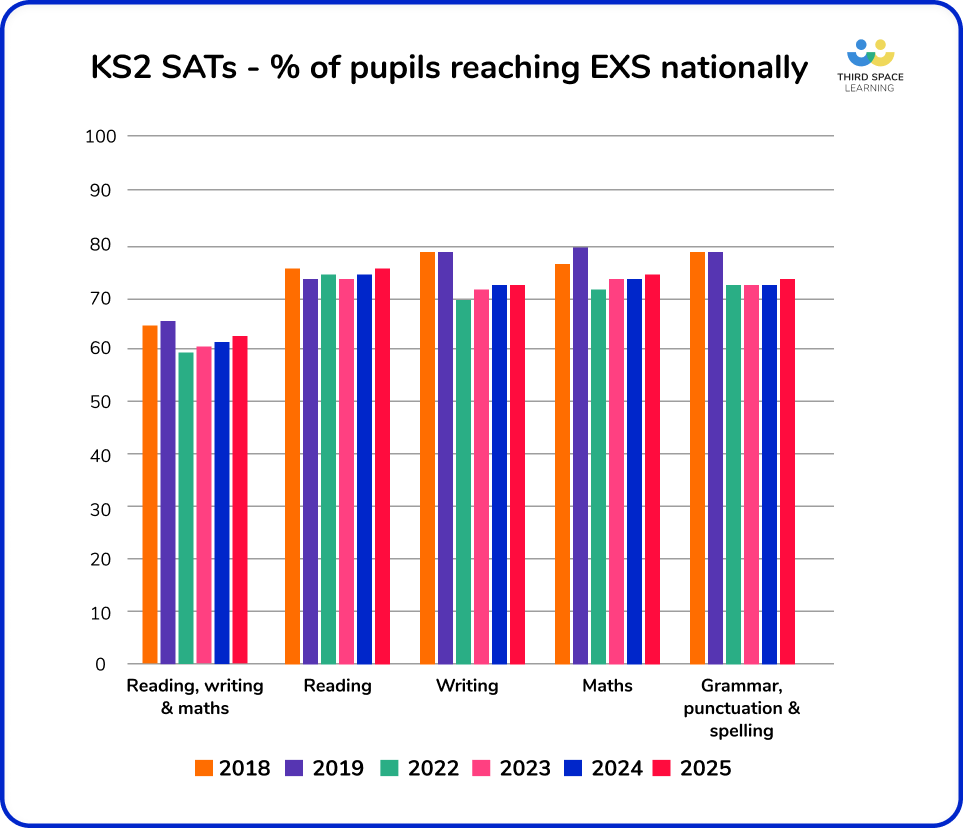
National attainment continues to remain below pre-pandemic levels of 2019
Although there’s a year on year increase in the percentage of pupils reaching the expected level in reading, writing and maths combined since COVID, 59% in 2022 to 62% in 2025, it is still lower than the 2 years leading up to 2020 – 64% in 2018 and 65% in 2019.
This year’s 1% rise follows similar increases in 2023 and 2024, marking a consistent upward trend and a total improvement of 3 percentage points since 2022. While this progress is encouraging, the data suggests that primary outcomes have not yet fully recovered to pre-pandemic levels.
Reading appears to show the least long-term impact from COVID disruption. 75% of pupils reached the expected standard this year, a 1% increase on 2024 and the highest percentage since the pandemic, matching the 2018 peak.
Writing, however, remains the most affected. In 2025, 72% of pupils met the expected standard, unchanged from last year and still 6 percentage points below the 78% seen in 2018 and 2019.
Maths has seen steady improvements from 71% in 2022 to 74% in 2025. However, this is still behind the pre-COVID results of 76% in 2018 and 79% in 2019. While progress is being made, a full return to pre-pandemic attainment levels has not yet been achieved.
Grammar, punctuation and spelling (GPS) has also risen slightly to 73%. But despite this modest 1% improvement, GPS attainment is also below the pre-pandemic levels of 78% in 2018 and 2019.
KS2 maths SATs results 2025
This section will focus specifically on the Key Stage 2 maths papers. We break down the results by content domain and year group coverage to give you a clear picture of how pupils performed.
As maths specialists, we’ll share meaningful insights that can support your school’s planning, teaching priorities, and intervention strategies.
A drop in the percentage of Year 6 content compared to 2024

While 2024 saw a 12% increase in Year 6 content from 2023, from 36% to 48%, almost pre-pandemic levels, this figure dropped back down to just 42% in 2025. Although this figure is still below pre-pandemic levels, it’s noticeably higher than in 2022 and 2023.
This drop in Year 6 content corresponded directly with a significant increase in Year 5 content, while the proportion of questions drawn from the Year 3 and 4 curriculum remained relatively consistent.
As in previous years, pupils could pass the 2025 maths SATs using only the content taught in Years 3 to 5. This year, 58% of the questions were drawn from these year groups, and required just 53% to reach the expected standard.
Whilst this is higher than in 2024, when only 52% of the content came from Years 3–5 and 49% was needed to pass, the percentage of Year 3-5 content remains significantly lower than in 2023. In 2023, the pass mark was just 51%, but a huge 64% of the paper was based on content from Years 3-5.
This continuing trend highlights how pupils with secure knowledge of core concepts taught before Year 6 can perform very well. It also reinforces the importance of curriculum coverage and mastery across the whole of KS2, not just Year 6, when preparing pupils for SATs success.
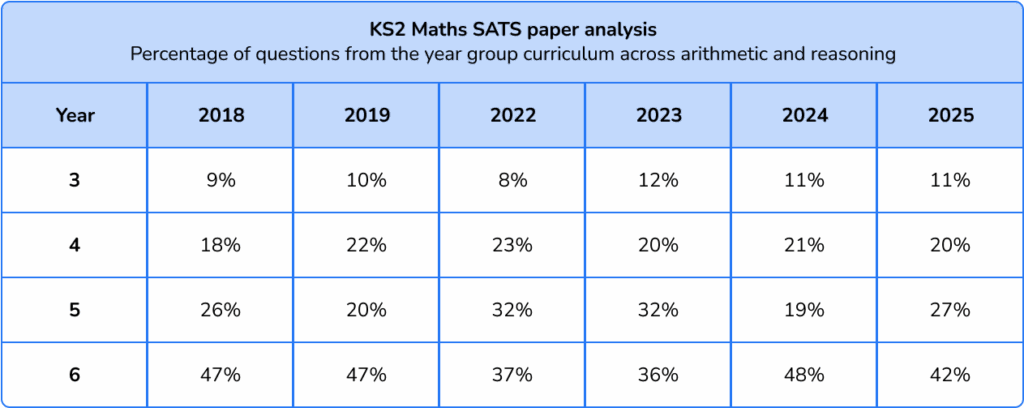
Pupils can reach the expected standard in 2 content domains
Despite a slight decrease in the proportion of content drawn from the two largest maths domains: Calculation and Fractions, Decimals & Percentages (FDP) from 61% in 2024 to 58% in 2025, it is still possible to reach the expected standard of 53% with secure knowledge in just these two areas.
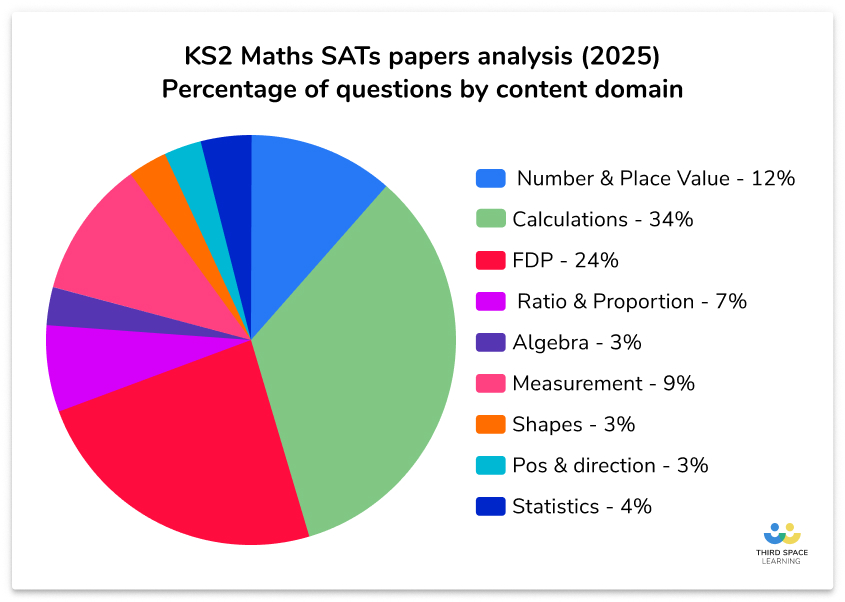
Their continued dominance within the test highlights the importance of strong foundations in calculation and FDP for overall maths success.
Whilst the percentage coverage from most content domains remained consistent, 2025 saw an increase in the percentage of Place Value, Ratio & Proportion and Measurement questions.
The arithmetic paper is still the key to SATs success in Maths
As in previous years, the arithmetic paper remains the most straightforward for teachers to prepare pupils for. Following our analysis of the arithmetic papers in our 2025 SATS paper question breakdown, it’s clear that not only do the percentage of questions from each content domain remain consistent each year, but the actual questions within each content domain also remain similar each year.
If you’re short on time, you can watch the top 5 key takeaways from the 2025 SATs below, or read the full blog for a more in-depth 2025 SATs paper question breakdown.
This year, pupils needed 58 marks across all three maths SATs papers to reach the expected level. With 40 marks available for arithmetic alone, this particular test is crucial to maths assessment success.
For example, a pupil scoring 30 out of 40 on Paper 1 would only need 14 out of 35 in each of the reasoning papers to meet the expected level, showing how heavily weighted arithmetic success is in overall maths performance.
KS2 SATs results 2025: next steps for your school
1. Compare your school performance to national data
You’ll want to know how your school compares to the national data for primary schools in England, for the combined reading, writing, and maths expected standard, as well as the expected standard levels for each subject.
Keep in mind that the smaller your cohort, the less statistically significant the national data will be.
You can find SATs KS2 results by school on the government’s school comparison service.
2. Carefully check whether any papers need to be submitted for remarking
When the SATs tests are marked, mistakes can occur, especially given the large volume of papers. Review your school’s results for each subject and identify a child’s raw score within three marks of reaching the expected level.
- Download the published mark scheme and carefully review the papers of these borderline pupils to ensure no marks have been missed.
- Pay particular attention to instances where pupils received a zero but should have earned marks for their calculations.
- Ensure that any workings outside the designated answer area have been considered.
If you believe a child may have received a lower score than they deserve, it is worthwhile to apply for a review and re-marking of those papers.
Be aware: SATs paper marking errors can go either way!
While it is true that marks can be missed during the initial marking, it is also possible that marks have been awarded incorrectly. Be aware that when submitting papers for remarking, there is a risk that pupils could lose marks.
For example, if you identify missed marks on a maths paper and request a remark, all three papers will be reviewed. Therefore, it is crucial to check carefully before submitting. Additionally, there is a cost associated with the review if no changes are made to the original marking decision.
3. Analyse the results to identify areas of strength and development
Before the end of summer term, dedicate time to thoroughly review the SATs results to gain a comprehensive understanding of the cohort’s performance. Identify areas of strength and weakness among the topics covered. Use these insights to inform planning for the upcoming year.
Is there a disparity in attainment among any key groups? If so, what strategies can be implemented to bridge these gaps?
It is important to look at key groups such as Pupil Premium versus non-Pupil Premium, boys versus girls, and EAL (English as an Additional Language) versus non-EAL.
Analyse the data for any trends and patterns, and consider possible reasons for any disparities. Once identified, consider how these variations can be mitigated in future years to narrow any achievement gaps as effectively as possible.
As SATs tests assess the entirety of KS2, any interventions should span across all KS2 years, not just focusing on Years 5 and 6.
4. No progress scores for pupils in 2024 or 2025
This cohort of pupils has no KS1 statutory teacher assessment judgement data, due to the cancellation of KS1 SATs during the Covid pandemic. This means your school’s progress scores for KS1 to KS2 can’t be calculated for 2025.
5. Reporting KS2 SATs results to children and parents
Individual schools have a statutory responsibility to report the pupils’ SATs results to parents in terms of the child’s scaled score.
For pupils in KS2, end-of-year reports must include the following:
- The child’s SATs results, detailing their scaled score and whether they met the expected standard;
- The outcomes of statutory national curriculum Teacher Assessments in English writing assessments, and science;
- An explanation, if applicable, as to why any national curriculum test was not taken.
KS2 reports must also include comparative information about the attainment of pupils of the same age:
- In the school;
- In the core subject nationally.
It is also a legal requirement that you provide enough time for parents to have the opportunity to discuss the results if they wish.
6. Headteachers: remember to support your staff, regardless of the results
SATs results can be a stressful time for school leaders, but it’s crucial to remember that all staff members will also need your support.
If the 2025 SATs results are positive, it’s important to celebrate this achievement with all staff, not just the Year 6 teachers. Many other teachers and support staff have contributed to these results and deserve recognition and celebration.
On the other hand, if the results are not as expected, leaders must be there to support all staff, especially the Year 6 teachers who may feel a disproportionate level of responsibility. It’s essential to reassure these teachers that the outcomes are not solely their responsibility.
The key thing to remember is that KS2 SATs are a collective effort involving the entire school community, regardless of the outcome.
7. What else can you do for your Year 6 pupils?
Beyond the statutory letter, each school has the autonomy to decide how they handle SATs results.
It’s important to recognise that children will react differently to their SATs results. While some may accept them calmly, others might find them distressing.
Where possible, it’s beneficial to allocate time to sit with each child individually and discuss their test results alongside teacher assessments. This allows staff to demonstrate to pupils that SATs are not the only measure of their abilities.
It also provides an opportunity to help children understand that their progress throughout the entire year is what truly counts, not just their SATs scores.
Spend the last few weeks of summer term looking beyond SATs and ensuring your pupils are ready for secondary school.
8. Celebrate the positives in your 2025 SATs!
While it’s natural to occasionally dwell on the negatives, especially if your headline figures aren’t as expected, it’s equally important to seek out the positives.
These might include individual successes among children or groups or specific aspects of the tests where your entire cohort performed well. These achievements are all worth celebrating.
Certainly, use the results to identify areas for improvement in the coming year. However, it’s important to remember that your pupils are more than just the scores they achieved on their SATs.
How can Third Space Learning improve maths SATs results?
Since 2013, schools like yours have trusted Third Space Learning’s SATs revision programme and one to one online maths tuition to help more Year 6 pupils reach the expected standard in maths. In our low-stakes, one-to-one environment, our AI maths tutor, Skye, provides more support to hundreds of target pupils to address misconceptions and secure topics they were less confident with.
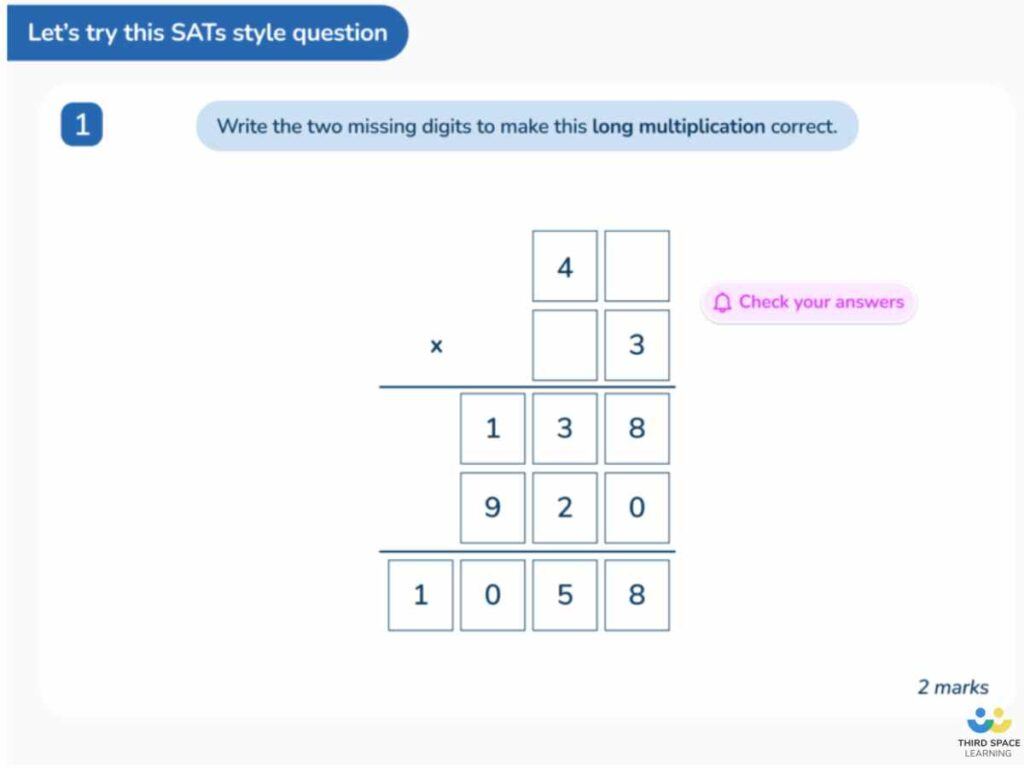
Year 6 pupils receiving maths tutoring from Third Space Learning were more likely to reach the expected standard than the rest of the cohort.
9/10 teachers said the one to one tutoring helped their Third Space Learners to achieve a higher score in maths than they otherwise would have.
78% of pupils receiving maths SATs tutoring from Third Space Learning achieved the expected standard compared to the national average of 74%.
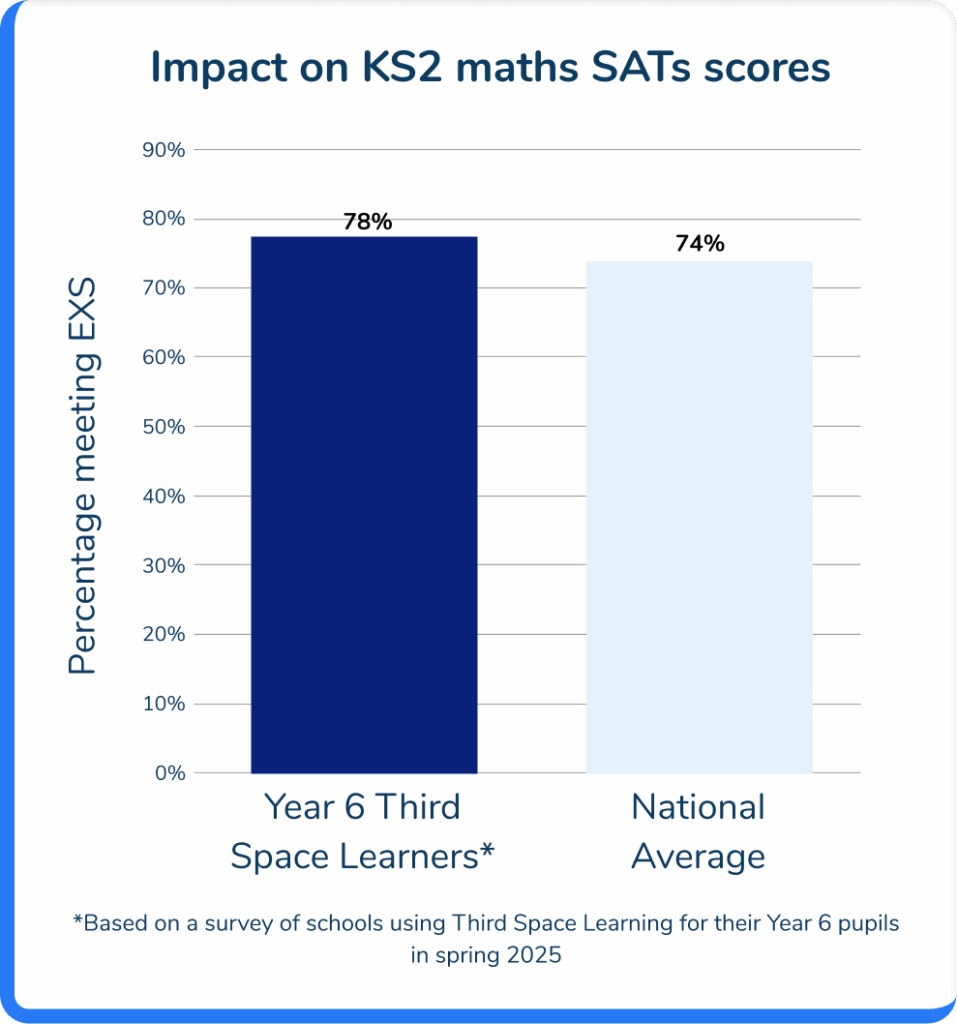
Our Curriculum Team review the SATs papers each year to identify the highest-impact topics and adjust the programme accordingly. The lessons follow an ‘I do, we do, you do’ approach to move pupils from guided to independent practice, featuring lots of exposure to SATs-style questions.
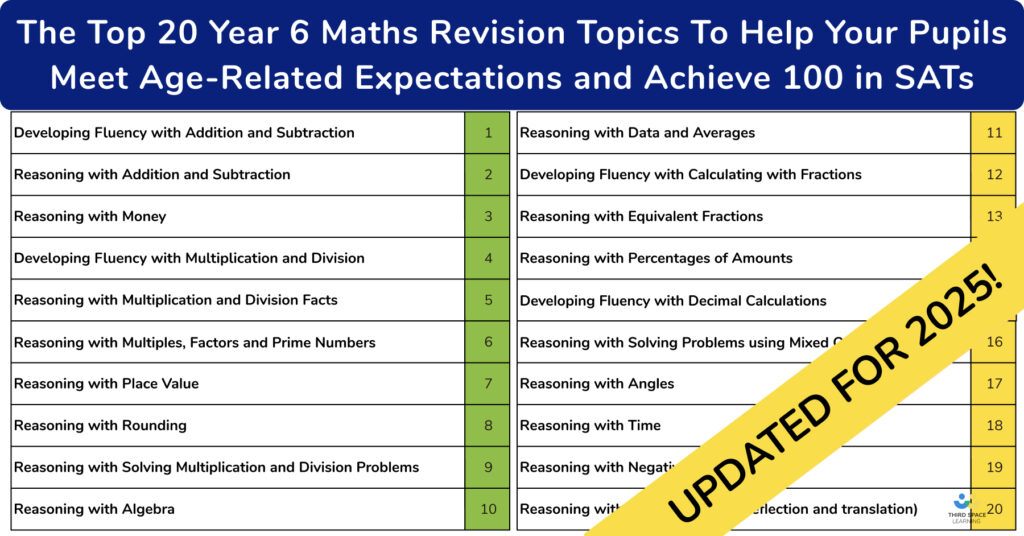
Your SATs success stories
Each year, we love hearing SATs success stories from schools like yours whose pupils met the expected standard with Third Space Learning’s online one-to-one maths tuition. And this year is no exception!
Here are a few of our favourite success stories:
One child has just come up to me he got a scaled score of 108 and was working towards at the start of the year – he just said to me I think tutoring really helped.
Louise Ince, Deputy Headteacher, Our Lady’s
We used AI maths tutor Skye this year. 93% of our Third Space Learning pupils reached the expected level. One child, who had been struggling with maths, attained at greater depth (scaled score 110).
Deb Harris, Assistant Head, Wormley CE Primary School
The children have always really looked forward to the sessions. For our ‘cuspy’ children, they achieved better than cuspy SATs results. It really helps that children are asked to verbalise their thinking.
Ruth Noall, Headteacher, Peasedown St John Primary School
We had some really hesitant children with Maths, they have made great progress! 88% of pupils using Third Space Learning made the expected level. We can’t wait to continue this!
Lee Clayton, Year 6 Teacher, St William’s Bradford
SATs resources for 2026
In addition to one to one spoken AI maths tutoring with Skye for every pupil who needs it and one low annual cost, schools and teachers can use the Maths Hub to support Year 6 pupils on their SATs journey.
Schools and teachers can access hundreds of free resources, including SATs practice papers and SATs worked examples, Year 6 maths SATS papers and a KS2 SATs revision page with links to all the resources you’ll need.
Previous SATs results and analysis
GET THE ANALYSIS ON PREVIOUS SATS
SATs have been running in their current incarnation for 7 years; there were no government standardised assessments in 2020 and 2021 as a result of the Covid-19 pandemic. Get all the analysis and results from previous national assessments below.
And find out which are the top 20 year 6 maths revision topics to focus on this year.
– SATs papers 2025
– SATs results 2025
– SATs papers 2024
– SATs results 2024
– SATs papers 2023
– SATs results 2023
– SATs papers 2022
– SATs results 2022
– SATs papers 2019
– SATs results 2019
– SATs papers 2018
– SATs results 2018
– SATs papers 2017
– SATs results 2017
– SATs results 2016
SATs results FAQs
The scaled scoring system helps schools clearly identify which pupils have either:
met the expected standard
exceeded it
working towards it
However, what counts as a ‘good’ score can vary from child to child. It’s important to remember that SATs offer just a brief snapshot of performance on a single day. A pupil who hasn’t met the expected standard may still have made significant progress and it’s that broader journey over time that often tells the real story.
In addition to the KS2 SATs scores, the following codes are used for teacher assessment results.
EXS Working at the expected standard
GDS Working at greater depth within the expected standard
WTS Working towards the expected standard
HNM Has not met the expected standard
You can find all details of the Key Stage 1 SATs and phonics screening check from the child’s school, child’s teacher or the DfE.
DO YOU HAVE STUDENTS WHO NEED MORE SUPPORT IN MATHS?
Skye – our AI maths tutor built by teachers – gives students personalised one-to-one lessons that address learning gaps and build confidence.
Since 2013 we’ve taught over 2 million hours of maths lessons to more than 170,000 students to help them become fluent, able mathematicians.
Explore our AI maths tutoring or find out about year 6 sats for your school.

